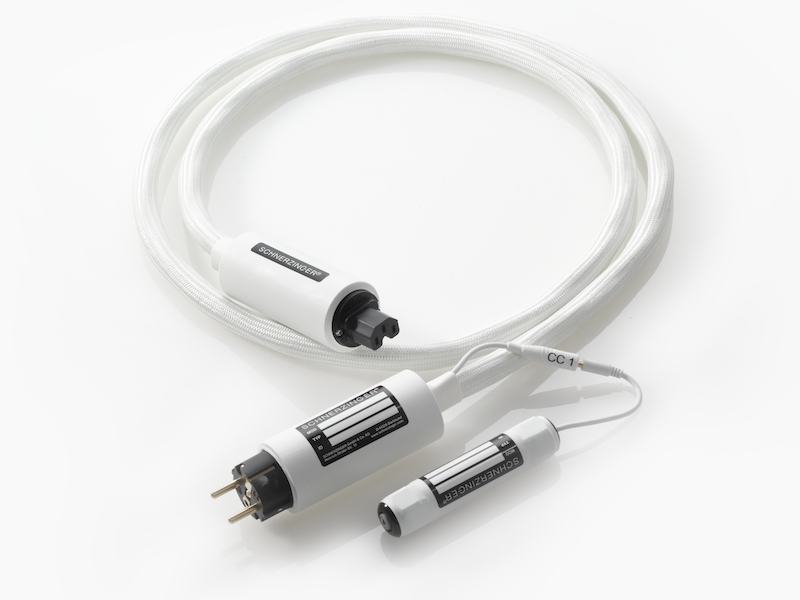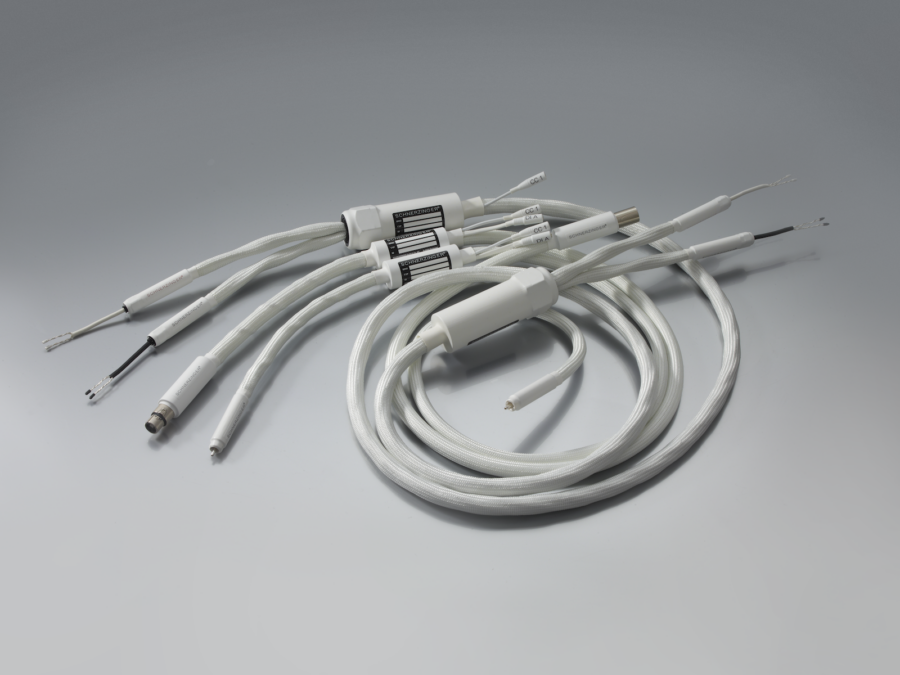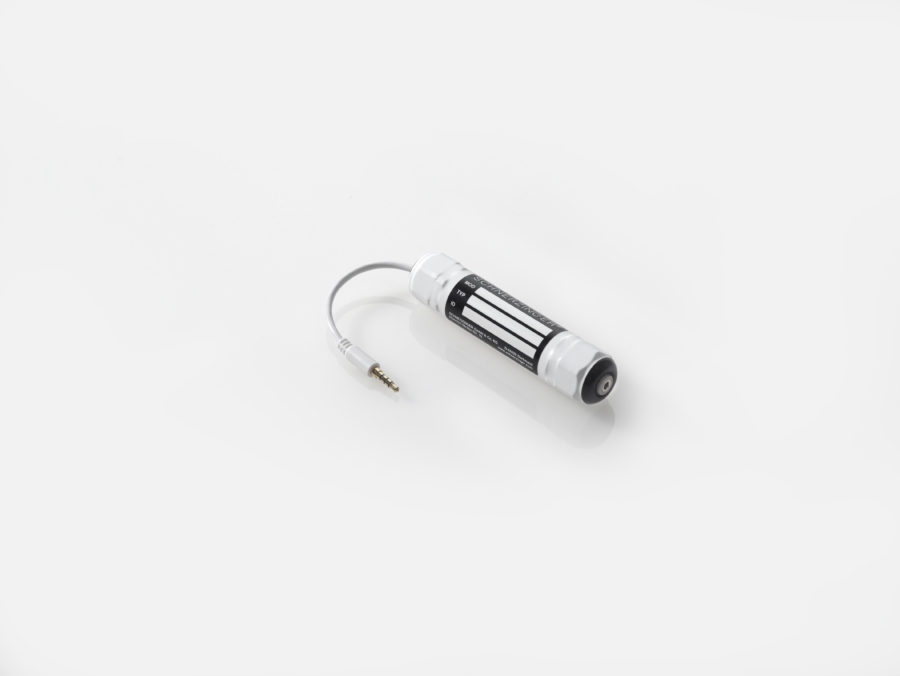Extreme
Leitfähigkeit
ungebremste,
zeitrichtige
Signalübertragung
Maximaler Schutz
gegen
Hochfrequenzstörungen
Technische Perfektion trifft auf natürliche Klangwiedergabe –
als pure Selbstverständlichkeit.
VOM PROBLEM ZUR LÖSUNG
Die Qualität von Audiokabeln wird maßgeblich durch ihre Leitfähigkeit und die verlustfreie Signalübertragung bestimmt.
Mit der zunehmenden Verbreitung funkgesteuerter Technologien wie WLAN und Mobilfunk ist die Belastung durch elektromagnetische Störfelder auf Ihr HiFi-Setup erheblich gestiegen. Daher ist neben einer exzellenten Leitfähigkeit auch ein wirkungsvoller Schutz vor diesen Störeinflüssen unerlässlich. Herkömmliche Abschirmtechniken stoßen dabei längst an ihre Grenzen.
Ein bis in den dreistelligen Gigahertz-Bereich funktionierendes Entstörkonzept wird zur zentralen Bedeutung für den Klang Ihrer Anlage.
Die hoch innovativen SCHNERZINGER Kabeltechnologien ermöglichen eine einzigartige Schnelligkeit, Kontrolle sowie Auflösung und Natürlichkeit von wiedergegebenen Instrumenten, Stimmen und Rauminformationen.
Das Resultat:
ein ungekannt realistischer Eindruck der Musikwiedergabe – mit schrittweiser Steigerung der Auflösungsqualität, vom ersten Austausch bis zur kompletten Verkabelung mit SCHNERZINGER.
ATOMIC BONDING
BIDIREKTIONALE BARRIERE
Dank der BIDIREKTIONALEN BARRIERE erfolgt eine hocheffektive Störfeldbereinigung hochfrequenter Störfelder – sowohl jene, die von außen eindringen, als auch jene, die zwischen den Geräten entstehen.
Der Signalweg bleibt vollständig geschützt, ohne die typischen negativen Einflüsse herkömmlicher Abschirmmethoden.
LINIEN
ESSENTIAL LINE
Diese Kabellinie markiert einen neuen Maßstab in ihrer Klasse:
Basierend auf der innovativen SCHNERZINGER Kabeltechnologie liefert sie ein konkurrenzlos hohes Niveau an Dynamik, Auflösung und Natürlichkeit – und damit eine außergewöhnlich authentische, beinahe greifbar realistische Musikwiedergabe.
Das klangliche Potenzial der ESSENTIAL LINE ist bemerkenswert. Durch den Einsatz unserer fortschrittlichen Technologien ATOMIC BONDING und der BIDIREKTIONALEN BARRIERE erreicht sie eine Klangqualität, die in den genannten Aspekten selbst deutlich höherpreisige Produkte übertrifft.
Ihre überlegene Performance entfaltet sich insbesondere dann vollends, wenn sie in einem durchgängig mit SCHNERZINGER Komponenten verkabelten Setup zum Einsatz kommt. Hier wird die überragende Musikalität und Kohärenz dieser Linie unmittelbar und eindrucksvoll erfahrbar.
RESOLUTION LINE
Vier Qualitätsstufen – für jeden Anspruch:
Mit den vier Qualitätsstufen der RESOLUTION LINE treiben wir unsere bereits extrem aufwändigen technologischen Verfahren zur Perfektion.
Dank ATOMIC BONDING und der BIDIREKTIONALEN BARRIERE entsteht eine spürbare Steigerung in Leitfähigkeit und Hochfrequenz-Entstörung – und damit in Dynamik, Auflösung und natürlicher Klangwiedergabe. Ein außergewöhnlich realistisches Musikerlebnis, das alles bisher Dagewesene in den Schatten stellt.
Jede HiFi-Anlage ist einzigartig, ebenso wie die Wünsche ihrer Besitzer. Deshalb haben wir die RESOLUTION LINE so entwickelt, dass für jedes Bedürfnis die passende Qualitätsstufe zur Verfügung steht.
Die charakteristische Signatur der RESOLUTION LINE ist in jeder Variante deutlich hörbar. In den höheren Qualitätsgraden sorgen jedoch noch aufwändigere Herstellungsverfahren und feinste Abstimmungen für eine Signalübertragung, die selbst höchsten audiophilen Ansprüchen gerecht wird.
CABLE PROTECTOR
Der CABLE PROTECTOR verstärkt die Leistung der BIDIREKTIONALEN BARRIERE, der Ableitungseffekt äußerer Störfelder erhöht sich, und das Auflösungspotenzial des Kabels kann sich voll entfalten.
step by step
Schon mit wenigen SCHNERZINGER Verbindungen lässt sich eine beeindruckende Wirkung erzielen – hier eine Empfehlung:
Generell gilt: Kabel am Anfang der Signalkette haben den größten Einfluss auf die Klangqualität.
Daher sollte die Optimierung idealerweise beim Quellgerät beginnen – durch den Austausch des Stromkabels und der digitale(n) Verbindungskabel. Denn Informationen, die dort verloren gehen, können im weiteren Verlauf der Signalkette nicht wiederhergestellt werden.
Alternativ kann man auch am Ende der Kette ansetzen – beim Lautsprecherkabel. Diese Kabel sind meist die längsten Verbindungen in der Anlage und dadurch besonders anfällig für hochfrequente Störeinflüsse.
Ob man also am Anfang zur Vermeidung von Informationsverlusten oder am Ende zur Reduktion von Störungen beginnt, hängt von der individuellen Belastung und Priorität ab. In der Regel empfiehlt es sich jedoch, mit dem Quellgerät zu starten.
Bitte beachten:
Solange sich in einer Musikanlage noch Kabel anderer Hersteller befinden, können durch diese elektrische Störfelder in den Signalweg eindringen. Die aufgenommenen Störungen werden dann ggfs. wegen der extremen SCHNERZINGER Bandbreite deutlicher hörbar und die von SCHNERZINGER Kabeln erwartete Klangverbesserung kann, bedingt durch den Kabelmix, ausbleiben.
Viele Kunden können ihre Anlage nur schrittweise auf SCHNERZINGER Kabel umstellen. Da die Kombination von Fremdkabeln mit SCHNERZINGER Kabeln aufgrund der beschriebenen Problematik ein gewisses Fehlerpotenzial in sich birgt, bietet SCHNERZINGER speziell für die Kombination mit Fremdkabeln entwickelte Lösungen an.





